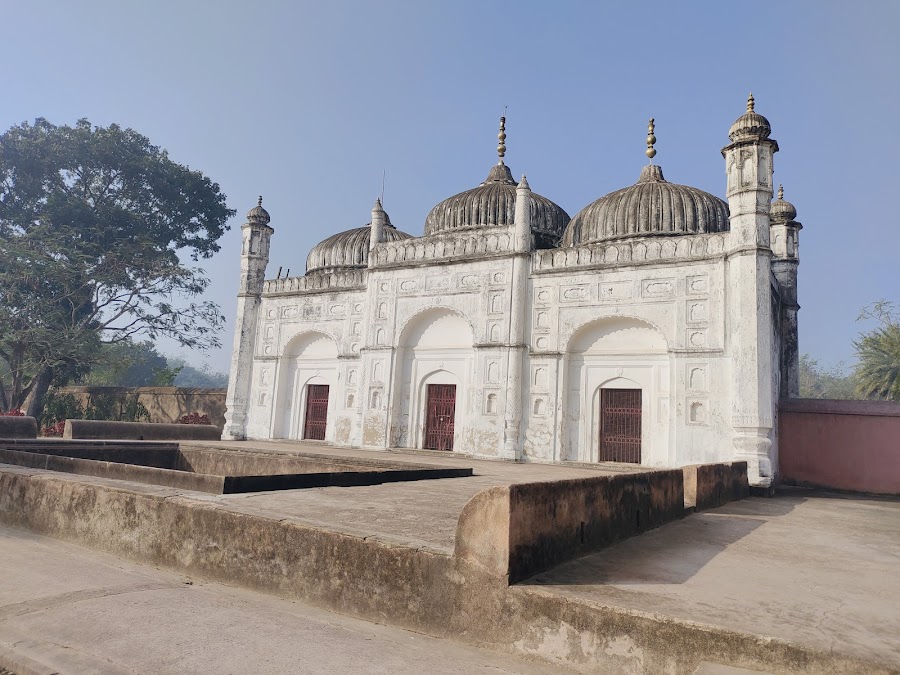
Khosh Bagh
Murshidabad, India
- Explore the tombs of Nawabs.
- Learn about Bengal's Nawabi history.
- Photography of Mughal-Bengali architecture.
- Walk through the historical gardens.
Known for:
Description:
Khosh Bagh, meaning 'Garden of Happiness,' is a serene and historically significant cemetery complex located in Murshidabad. It houses the tombs of the Nawabs of Bengal, including Alivardi Khan and Siraj-ud-Daulah, along with their family members. The sprawling gardens offer a peaceful escape from the bustling city, allowing visitors to reflect on the rich history of the region. The architecture reflects a blend of Mughal and Bengali styles, with intricately designed tombs and mosques. The atmosphere is tranquil and provides a glimpse into the lives and legacies of the rulers who shaped Bengal's destiny. The site is well-maintained and offers a captivating experience for history enthusiasts and those seeking a moment of serenity.
History:
Khosh Bagh was commissioned by Nawab Alivardi Khan in the 18th century as his final resting place. He, along with his grandson Siraj-ud-Daulah and other members of the Nawab family, are buried here. The garden served not only as a burial ground but also as a symbol of the Nawabs' power and legacy. After the Battle of Plassey in 1757, Siraj-ud-Daulah's defeat marked a turning point in Indian history, leading to British dominance. Khosh Bagh, therefore, stands as a poignant reminder of the end of an era and the beginning of colonial rule. The tombs within the garden are a testament to the architectural styles prevalent during the Nawabi period and provide valuable insights into the region's cultural and political past.